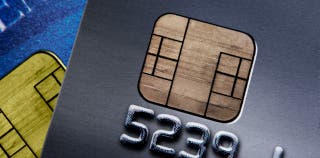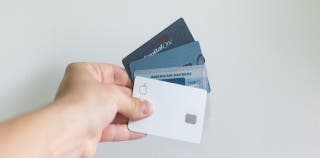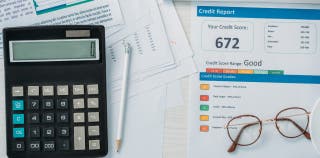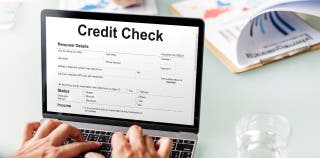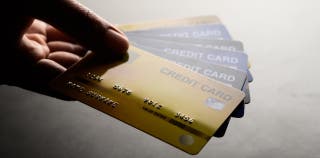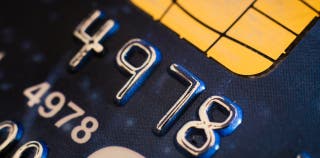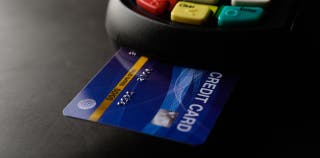What is credit card interest?
According to the Federal Trade Commission (FTC), credit card interest is “what you pay for using someone else’s money.”
In other words, credit card interest is a charge that comes into play when you use your credit card as a short-term loan, then take some time to pay the credit card company for your purchases.
Credit card interest is typically displayed as an annual percentage rate, or APR. When it comes to credit cards, the APR and the interest rate are typically the same.
Where a credit card with a low APR charges you less interest over time, credit cards with a high APR will charge you more interest when you carry a balance. If your goal is reducing the financial impact of credit card interest, you should be find a credit card with a low interest rate or pay your bill each month so you avoid interest altogether.
How credit card interest works
If you pay your credit card bill during your card’s grace period (the time between the end of your billing cycle and your credit card’s due date), you won’t be assessed any interest charges.
However, credit card interest works as a daily rate that is calculated based on the balance you carry beyond each billing cycle. This daily rate is calculated by dividing your annual percentage rate (APR) by the number of days in the year (365), then multiplying your average daily balance by the daily rate. Once the daily interest charge is determined, this amount is added to your credit card bill each billing cycle.
Also note that credit card interest you accrue from carrying a balance may also be called residual interest.
How to calculate credit card interest
Understanding how credit card interest is calculated, and how factors like your average daily balance and your interest rate impact the amount you’re charged, can be crucial to your financial well being.
Credit card interest is particularly tricky to calculate by hand because your interest rate is done on a yearly basis, but the calculations are based on a daily/monthly basis.
Learning how much interest will cost you is often the first step to minimizing its impact.
In this section, we will walk you through how to calculate your credit card interest using our credit interest calculator and also show you how to calculate your credit card interest by hand.
First, let’s look at the credit card interest calculator.
Steps to calculating your credit card interest charges by hand
To find out how much interest you might pay on your credit card, you should take steps to calculate the daily periodic rate. Here are the steps required to do just that, plus an example.
You can calculate your daily APR using the following calculation and these three steps:
- Find out your credit card’s current APR, as well as the average daily balance on your credit card.
- Divide your credit card’s APR by 365 (for the 365 days in the year) to find your daily periodic rate.
- Multiply your current credit card’s average daily balance by your daily periodic rate.
Here’s an example of how these steps might work in real life:
Let’s say you have a credit card balance of $1,000 for the entire month in question, and that your credit card interest rate is currently set at 15.99%. In this case, you would divide 15.99% by 365 to get a daily APR of 0.0438%.
From there, you would multiply your credit card balance of $1,000 by 0.00043, which would get you a daily periodic rate of $0.43. This means you would rack up 43 cents in interest for each day of your billing cycle you carry a balance.
If you wanted to figure out your monthly interest charges, you would multiply this amount by the number of days in your billing cycle, which is usually 30. In this case, you would incur a $12.90 interest charge for the month.
When is credit card interest charged?
Generally speaking, each credit card issuer charges interest on your balance when you don’t make a full payment by your credit card’s due date. If you owe $500 but you only make a minimum payment of $25, for example, the finance charge would apply to the $475 balance you carry from one month to the next.
With that being said, the majority of credit cards offer something called a grace period. This period of time is interest-free and lasts from the day your billing cycle ends until the day your credit card payment is due.
If you managed to pay your full credit card statement balance during the grace period, you wouldn’t pay any interest charges that month.
What determines a credit card’s interest rate?
Credit card interest rates are determined by an array of factors including the prime rate, market influences, your credit card issuer and your own creditworthiness and credit score. By and large, individuals with a good or excellent credit score tend to qualify for the lowest interest rates, yet those with fair credit or a poor credit score pay the highest interest rates overall.
According to the Consumer Financial Protection Bureau (CFPB), you may have the chance to ask the credit card issuer what your interest rate might be before you apply. However, they may not be able to provide this information until they have the full borrower information from your application.
What is a “good” credit card interest rate?
A “good” credit card APR can involve any rate that is below average. At the moment, the average credit card interest rate is slightly over 16%.
With that being said, some 0% APR credit cards and balance transfer credit cards offer zero interest to each eligible cardmember for a limited time. With these offers, you get the chance to skip interest payments on purchases, balance transfers or both for up to 21 months.
You can also find different types of low-interest credit cards from time to time, which can offer lower than average rates for the long haul. However, credit cards with the lowest rates and best terms typically only go to individuals with good or excellent credit.
How to avoid credit card interest
Avoiding credit card interest is a solid goal to have if you want to maximize the benefits of your card. After all, credit card interest makes everything you buy more expensive, and it can add up to huge sums over time.
If you wind up using your card to rack up a considerable amount of credit card debt, the finance charge from that debt can cost thousands of dollars over time. As a cardholder, you would be wise to skip the high-interest finance charge involved in using credit altogether. But, how can you do that exactly?
To avoid credit card interest or make sure it doesn’t accrue, consider these steps:
- Only charge purchases you can afford to pay off.
- Use your credit card in conjunction with a monthly budget.
- Pay your credit card bill more than once per billing cycle.
- Avoid using plastic for impulse purchases.
- In instances where you know you may be tempted to overspend, use debit cards instead of credit.
- Keep track of your credit purchases and spending throughout the month.
- Download the app provided by your card issuer so you can monitor purchases on the go.
- Never use your card to get a cash advance at an ATM.
In addition to these steps, you should strive to choose a credit card with no annual fee or a fee you can justify based on the cardholder perks you receive.
How to lower your interest rate
If you do wind up borrowing with a credit card for the long haul, there are other steps you can take to get a lower APR.
These steps can help make repayment of your credit card debt easier to handle, and they can save you money along the way:
-
Pick a credit card with 0% APR.
First off, you should know that some cards offer zero interest on purchases for a limited time. Many cards in this niche also offer cashback or rewards for each dollar you spend.
-
Consolidate debt with a balance transfer credit card.
If you currently have credit card debt on a high-interest credit card, consider consolidating that debt with a balance transfer. A fee for each balance transfer will apply, yet you can save thousands of dollars on interest over time.
-
Call your issuer and ask for a lower APR.
Also consider calling your issuer as a cardmember and asking them to lower your credit card interest rate as a favor. They may be willing to cooperate with your request, but you’ll never know unless you ask.
With all this being said, you may not have to care about your credit card’s interest rate if you never carry a balance. When you remain debt-free, you can choose cards based on other factors like credit rewards programs, cashback rates, day-to-day cardholder benefits and travel perks.
Repaying credit card debt — An example
If you have credit card debt and you’re focusing on repayment, you should think long and hard about how long you want to pay it off. By and large, the amount of time you spend as a cardmember in repayment will determine how much interest you pay on your purchases. And, if you take your sweet time to become debt-free, you could wind up flushing thousands of dollars down the drain.
Want to know how much interest you could pay with a high-interest credit card? Consider this example:
Let’s say you currently owe $11,000 on a credit card with a 19% APR, and that you want to get out of debt in a reasonable amount of time. However, other bills and living expenses prevent you from paying as much as you really want to on your debt, so you’re only making a minimum payment of $235 right now.
If you stayed on this path without using your card to rack up more credit card debt, it would take you 56 months to become debt-free. During that timeline, you would pay back the $11,000 original balance you owed plus $5,636.64 in interest charges.
Now let’s imagine you reworked your budget so you could double your minimum payment and pay $470 per month. In that case, you could become debt-free in 28 months and reduce your interest charges to $2,689.
This example shows the power of making more than the minimum payment on your card, but it also shows how damaging high-interest cards can be to your finances. If your goal is using credit cards for their perks and rewards, you should strive to avoid racking up credit card debt altogether.


























